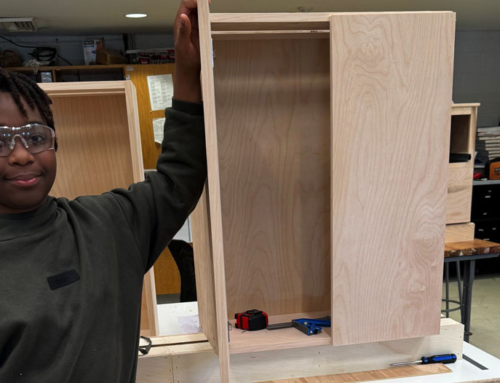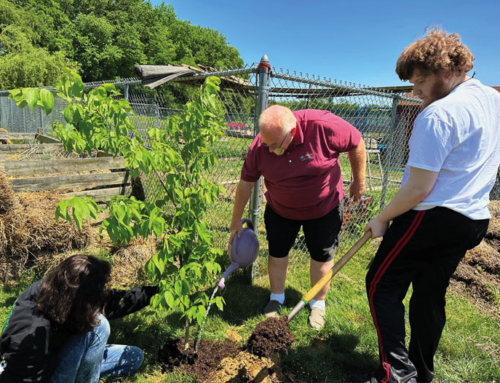How? The School is home to a 1,200 panel, 284 kW solar farm recently installed on one-and-a quarter aces of its campus in Willingboro.
The project is a partnership between the School and local entrepreneur, Mark Napier. The installation was arranged through a “Power Purchase Agreement” in which the school leases the land – at no cost – to Napier, and in exchange receives the rate break.

Dr. Steven Morse, Superintendent of Garfield Park Academy, right, with solar installation partner,
Mark Napier.
The project and the partnership are part of a statewide trend. Solar systems are being built here rapidly, and some of the largest solar farms in the nation are already up and running in the Garden State, giving it the largest installed capacity in the nation outside of California.
That may seem strange when one considers the state’s small size, dense population centers, frequent clouds and cold winters. But investment and operating incentives in the Garden State fast outweigh those factors, making it an extremely “solar friendly” place to do business.
The return on investment of solar installations is quicker in New Jersey than almost anywhere in the country because of its Solar Renewable Energy Certificate (SREC) program, a system of credits given to businesses that create solar renewable energy, and a marketplace for others to buy them if they do not meet State renewable energy standards.
Investors are therefore finding a marketplace full of potential partners, producing profit by generating electricity for others, and reducing the State’s reliance on non-renewable energy sources as they do.
Businesses like Garfield Park Academy can put unused portions of their campus to more effective use, and dramatically reduce their energy costs immediately.
How much will the School save? Based on operations so far, it is reasonably expected to save us as much as $50,000 in the first year, and even more in years to come.
And the entire project contributes to the curriculum at the school as well. “The panels have piqued the interest of our students and staff, who are becoming more conscious of energy conservation as a result. Teachers have already developed lessons around it in science, economics and history,” said Dr. Morse.










